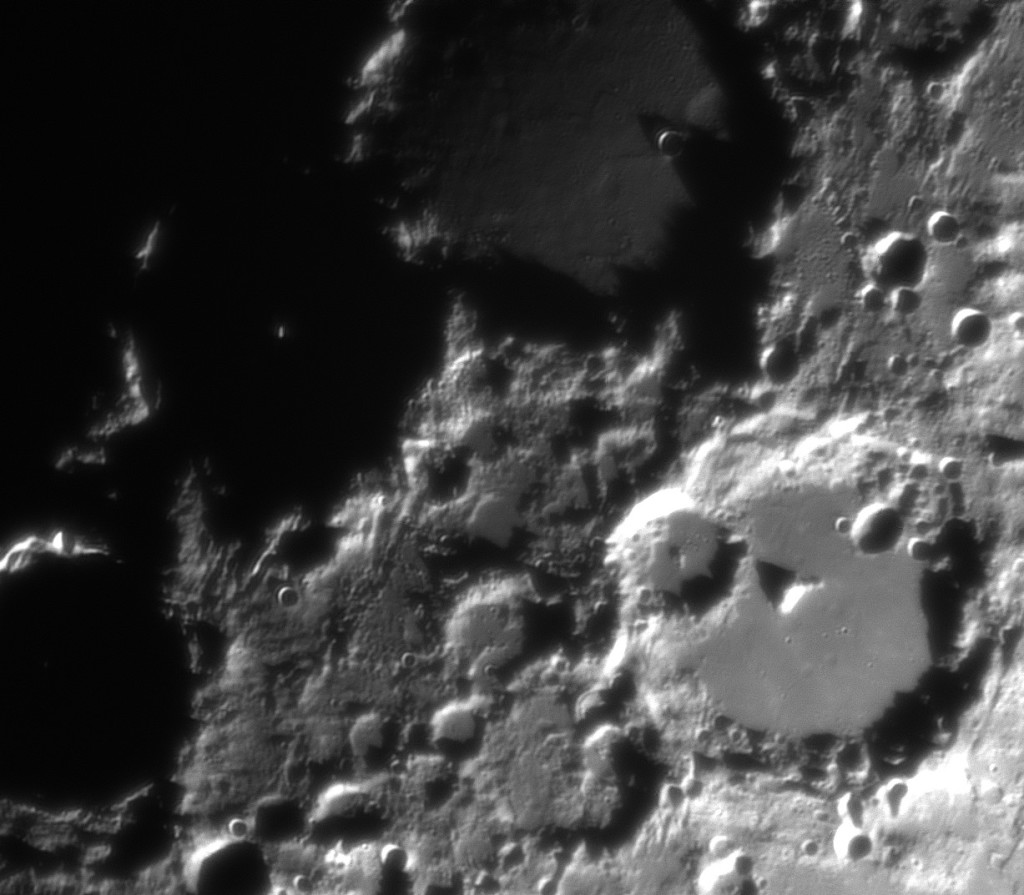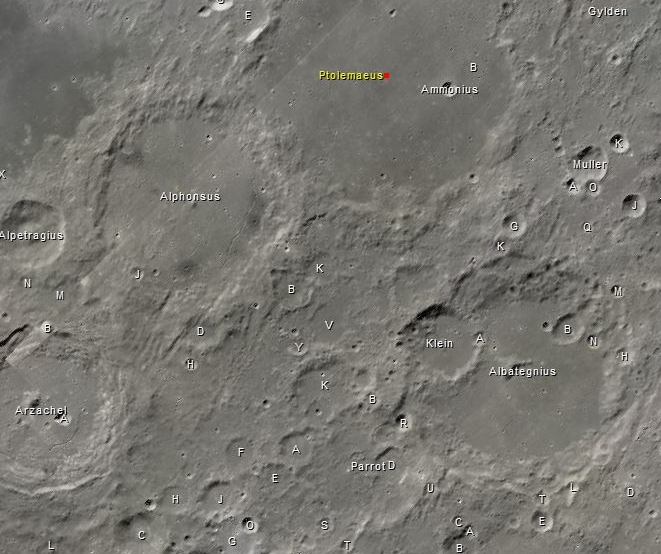
The three major craters in the image above are Ptolemaeus (top center), Alphonsus (mid left) and Albategnius (bottom right). The image was taken on the 27th of January when these craters were just on the terminator. This places the Sun low on the lunar horizon. The low light angle accentuates shadows highlighting the Moon’s terrain. The image is a stack of 150 frames.
Ptolemaeus is named after the ancient astronomer and mathematician Claudius Ptolemy. Classified as a walled plain, the crater is about 95 miles in diameter and about 1.5 miles in depth. The crater has a smooth lava filled floor with one prominent sub-crater: Ammonius. Notice the depression just to the upper right of Ammonius. This is a pre-existing crater that was filled in when lava filled the primary crater. There are several visible in Ptolemaeus and are known as ghost craters.
Albategnius is named for the ancient Muslim astronomer known for refining the length of the year to 365 days, 5 hours, 46 minutes and 24 seconds. His calculation is only 2 minutes and 21 seconds shorter than that accepted now. The crater appears more damaged by additional impacts than Ptolemaeus, the most obvious being the 27 mile wide crater Klein that interrupts the rim of Albategnius. Both Albategnius and Klein exhibit a central peak where lunar material rebounded after impact.
Alphonsus also has a central peak. In fact, the tip of the central peak is just about all that is visible in the image with the majority of the crater deep in shadow. The central peak is about 4,900 feet high. One of the numerous sub-craters in Alphonsus is manmade. The 1965 NASA probe Ranger 9 impacted the crater floor after sending back more than 5,800 photographs.
